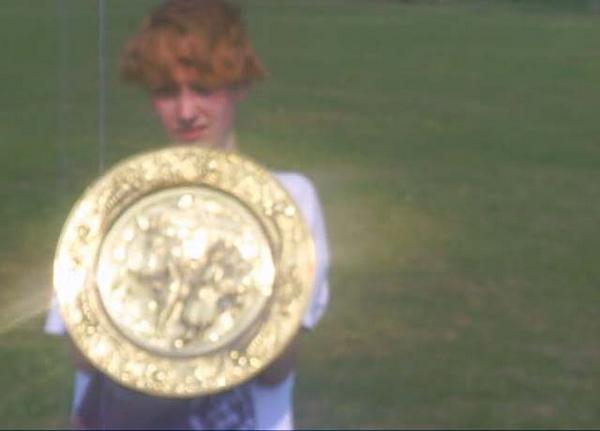Aliina Astrova Stands Alone

Still featuring Astrova, from Purple Knife’s video for “Cafeteria Crematorium”
Aliina Astrova is a writer, curator, performer, and musician, combining all of the above in simultaneous expressions that involve video, publications, installations, photographic work and experimental soundtracks in a neo-psychedelic approach. She is also the founder of a multimedia nomadic gallery The Ceylan Projects, and the leading force in the experimental band Purple Knife. Not bad for a 20 year old.
Evidently precocious, Aliina grew up in Talinn, Estonia, although she works from home in Stoke Newington, in London’s East End. She started her career as a would-be art activist by getting involved with the more challenging school projects that lead to her working with various performance art centers and putting on concerts. “I was just a kid running around and helping out,” she says, “But I was already assisting the organization of contemporary dance projects when I was 15.” In 2006, she moved to London to study for a bachelors degree in Art Criticism and Curating at Central Saint Martins, and found herself going well beyond the study of theory to active involvement on the London Art scene, working on music events at the ICA, and managing art projects at the Innovation Centre Gallery.
Astrova is celebrating the first complete year of the Ceylan Projects, a curatorial project that puts up shows in different locations around London. Events have brought together avant-garde dance, installations and music, all performed simultaneously in living spaces converted for the event. “The aim is to represent musicians in a fine arts manner rather than to release them through a label,” says Aliina. She also encourages artists she works with in a multimedia approch: Roy Nnawuchi, frontman of Hype Williams, regularly shows photographs at the Ceylan exhibitions.
Ceylan’s next show “Magic and Happiness” is based on an essay of the same name, by Italian philosopher Giorgio Agamben. The text discusses the notion of happiness and different ways of achieving it (or not). Astrova says of the theme, “I’m sick of highly conceptual, badly informed art. I don’t use art as an illustration of a poorly understood concept, rather philosophy opens new questions about life. Every piece of art should stand on its own, as a universe of its own.”
But then again, neither the artist nor the curator can stand alone. “There still is a very black and white notion of being either a curator or an artist. The position of an innocent bystander who doesn’t participate is ridiculous,” she says. “I’m not one or the other, it is the middle-ground that interests me.”






